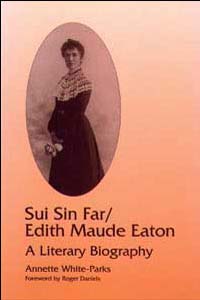A Classic Study of the History of Caribbean WomenPosted in Articles, Book/Video Reviews, Caribbean/Latin America, History, Media Archive, Women on 2012-05-03 03:26Z by Steven |
A Classic Study of the History of Caribbean Women
H-Caribbean Reviews, H-Net Reviews
December 2008
Barbara Bush
Lucille Mathurin Mair. A Historical Study of Women in Jamaica, 1655-1844. Kingston: University of the West Indies Press, 2006. 496 pp. $60.00 (cloth), ISBN 978-976-640-166-5; (paper), ISBN 978-976-640-178-8.
I first encountered Lucille Mathurin Mair’s work during the 1970s when I read her seminal article, “The Arrivals of Black Women,” published in Jamaica Journal in 1975. Her work, which influenced me and a number of other pioneering historians in the field, was seminal in developing research in gender and slavery. Mair’s research, however, went beyond Jamaican slave women of African origin; it also embraced white and mulatto, or “brown,” women, slave and free. Her doctoral thesis, supervised by Elsa Goveia, the first woman professor of history at the University of the West Indies, Mona Campus, Jamaica, was awarded in 1974. Mair (née Waldrond) went on to become a well-known Jamaican historian, author, teacher, activist, and diplomat, but her dissertation remained unpublished. Verene A. Shepherd and Hilary McD. Beckles, both professors of history at the University of West Indies who have made a significant contribution to gendered perspectives on Caribbean history, are thus to be commended for transforming this monumental study into a published monograph.
The book is divided into three main sections that map Mair’s original structure. Part 1 addresses the origins of Jamaican society and examines female arrivals from 1655 to 1770. Part 2 focuses on creole slave society, while the final part, “Postscript, 1834-1844,” explores the beginnings of a free society. Each section weaves together the lives of white, black, and mulatto women, and explores their relationships to each other as well as to white, black, and mulatto men. Shepherd and Beckles have skilfully and sensitively edited the original text, making the minimum of changes. Their introduction effectively contextualizes Mair’s study in relation to developments in the field of women’s, gender, and feminist history since the 1970s, and its impact on the postcolonial historiography of slave and post-slave societies…
…One of Mair’s most interesting contentions is that the “original creole matriarch may not have been black but brown” (p. 292). Free brown women, she argues, tended to live in families dominated by women and looked down on black women and brown men, whom they regarded as “helpless.” These matriarchies may reflect the particular location of mulatto women in slave societies. Brown women were the cultural conduits between black and white worlds, as the mistresses of white men and as “grog house” keepers. But, observes Mair, their position in Jamaican society was ambivalent. As the object of white male desire, they could prosper but they could never match the ideal of white womanhood and achieve respectability. Religion was the other end of the spectrum of approved means of brown upward mobility, but, argues Mair, before the abolition of slavery in 1838, there does not seem to have been the same development of philanthropy and sense of civic duty as was found among the Barbadian urban free colored population. With emancipation, however, there was a decline in concubinage, a reflection of the pervasive emphasis on “respectability” in post-slavery society that separated the “civilized” and aspiring mulattos and blacks from their “primitive” African past…
Read the entire review here.

